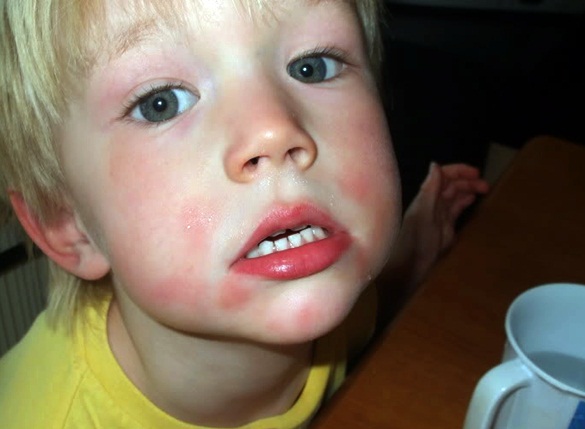
Tomatoes can cause your allergies because they are part of the nightshade allergy family. Tomatoes also contain salicylates, which are related to aspirin and a by-product of salicylic acid, you may be one of the people who cannot stomach them. Some of you may only have complications with raw tomatoes while others will have difficulties with processed tomatoes. Here are ways to determine if you have a tomato allergy and if it occurs with raw tomatoes, processed tomatoes, or both.
Symptoms of Tomato Allergy
National of Institute of Allergy and Infectious Disease reports if you suffer from hay fever, you may be allergic to tomato. Tomatoes many create unpleasant reactions, ranging mild to severe.
- Lips: Immediate swelling of mouth and lips.
- Mouth: Appearance of mouth sores or tingling immediately or 30 minutes after eating a tomato.
- Throat: Itching, tenderness, difficulty breathing and throat closing.
- Skin: Rashes, inflammation, and stinging in other parts of your body that have not come in contact with the tomato.
- Additional Symptoms: Symptoms to look out for that could be related tomato or nightshade allergy are gastrointestinal problems, increase in production of bodily fluids such as tears, sweat, or saliva, stomach ache, emesis or cramps, headaches, sinus problems, chest tightness, conjunctivas, and/or mental or emotional issues.
When to see a doctor: The following are the symptoms of anaphylactic shock and urgent medical assistance will be required!
- tingling lips
- swelling face
- urticaria (hives)
- tightening of the chest
- difficulty breathing
Preventions and Treatments for Tomato Allergy
Allergies are mistaken by your body as being harmful; therefore, your immune system will release antibodies to counteract the harmful ingredient. The next time you eat that food, your immune system delivers histamine along with other chemicals into the bloodstream, causing a wide arrange of symptoms such as runny nose, itchy eyes, rashes and hives, nausea, diarrhea, breathing difficulties or anaphylactic shock.
1. Preventions
There are several ways you can verify and prevent tomato allergic reactions.
Ask your doctor to complete a skin and blood test, and ask your doctor to provide education on your allergies as well as treatment. You may also want to discuss medication with your doctor in case of an emergency.
Avoid eating tomatoes or having any contact with them if you are diagnosed with tomato allergy. Here are some tomatoes and tomato products to avoid:
- Fresh tomato: Avoid eating raw tomato in all forms, such as tomato in salsa or natural dried tomato.
- Cooked tomato: Some may be allergic to fresh tomatoes, while others can get symptoms when eating cooked tomatoes, including pureed tomato, pasta sauces, chili, etc.
- Nightshade vegetables: You may need to consult a doctor to confirm whether you can eat vegetables in nightshade family, such as bell peppers, eggplant. Because tomato is one kind of nightshade family vegetables and the other vegetables in the same family contain similar proteins, which may also cause tomato allergy symptoms.
Always check the labels on food products for anything that might contain tomatoes and be aware of the places where others food may be polluted by tomatoes, as well as ask if there’s any ingredient of tomato when you’re dining in a restaurant.
2. Treatments
- Histamine which is present in Benadryl is used to treat mild tomato allergy. However, some may require you to go to the emergency room. If you have breathing difficulties, low blood pressure and swelling of your throat, call 911 or go to the emergency room. During this time, you should take precautions to prevent shock by lying down with one leg on a pillow and the other off the floor and a warm blanket around you. Have others monitor your reaction until help arrives.
- Using anti-Inflammatory medicines such as ibuprofen or using topical cream will reduce swelling and itching and continue to observe your symptoms. Do not wait until symptoms become life-threatening before having someone drive you to the emergency room or calling 911. If you have prescription to alleviate symptoms, read instructions and use administer medication properly.
- Keep your cutting board and knives free from tomatoes, and be aware of possible cross contamination with outside dining. You may also want to purchase an alert bracelet from your doctor that list the allergy and how to treat it in case of a reaction.
Tomato Allergy: 2 Alternative Recipes for You
1. Alfredo Sauce
|
Ingredients |
Directions |
|
|
2. Bechamel Sauce (For Pizzas or Pastas)
|
Ingredients |
Directions |
|
|